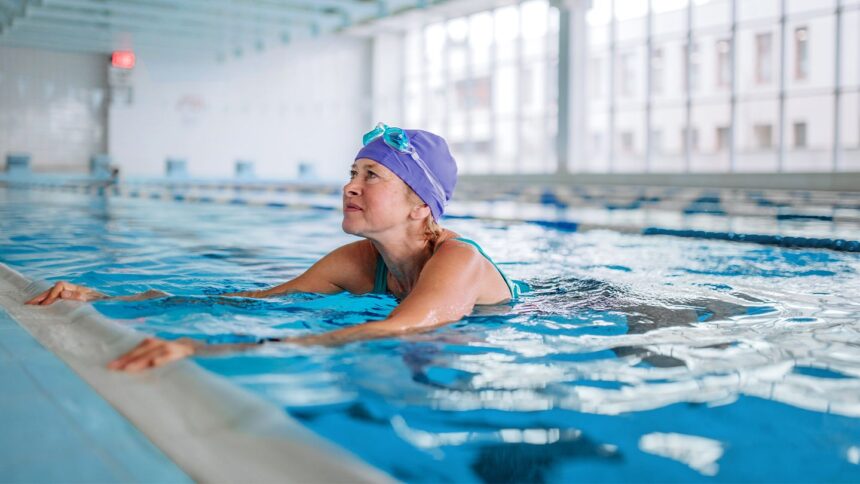For people living with diabetes, swimming offers significant health advantages – however, it introduces unique challenges, particularly for those managing insulin levels. This comprehensive guide examines how swimmers can navigate these complexities to safely enjoy the numerous benefits that water-based exercise provides.
The Allure of Aquatic Exercise
Swimming presents distinct benefits compared to many other forms of physical activity – it is a full-body workout while minimizing impact on joints and certain diabetes-related complications. Notably, swimming boasts several advantages specifically relevant to individuals with diabetes:
A 2021 study in BMC Sports Science, Medicine, and Rehabilitation found that regular swimmers showed significant improvements across multiple metabolic markers including blood pressure regulation, cholesterol levels, glucose control, and body composition. Similarly, research published in Experimental and Therapeutic Medicine (January 2019) indicated swimming interventions could improve insulin sensitivity and reduce chronic inflammation – both critical factors for diabetes management.
Navigating Diabetes Challenges
The buoyancy of water makes swimming an excellent low-impact exercise option, particularly beneficial for individuals experiencing mobility issues or diabetic neuropathy. This gentle resistance training helps strengthen muscles while reducing pressure on the feet that can be problematic in these conditions.
However, swimmers with diabetes face a unique challenge: managing hypoglycemia risk underwater and combating potential symptom masking due to fatigue and unusual environments. These considerations necessitate specific precautions:
- Meticulous Blood Sugar Monitoring: Frequent checks are essential both before starting and during swimming sessions, especially using continuous glucose monitors (CGMs) or fingerstick meters after drying hands.
- Strategic Carb Intake & Insulin Management: Adjust carbohydrate timing or insulin dosing based on individual response patterns to prevent lows while exercising.
- Device Preparedness: Always have fast-acting carbs readily available, wear medical identification, and consider temporary suspension of monitoring devices if necessary for safety reasons.
The specific management approach will depend heavily on the swimmer’s individual diabetes profile – it is crucial to develop a personalized plan in consultation with their healthcare provider. Furthermore, swimming should ideally be scheduled strategically (such as earlier rather than later in the day) to optimize blood sugar stability throughout training sessions.
Device Compatibility: A Reality Check
While many electronic diabetes devices demonstrate impressive water resistance ratings, swimmers must understand their specific limitations:
- CGMs: Most are rated for submersion in still water up to a certain depth and timeframe (typically FreeStyle Libre: ~30 mins at ~3 ft; Dexcom & Guardian Connect: up to 24 hours at greater depths). However, practical swimming conditions often involve splashing or movement that exceeds these ratings.
- Insulin Pumps: Vary significantly in their specifications (Omnipod 5, Medtronic MiniMed 780G, and iLet Bionic Pancreas offer specific water capabilities). Always verify manufacturer guidelines for your particular model before use.
- Critical Understanding: Recognize that Bluetooth communication from CGMs can be severely limited underwater. This means relying solely on device alerts during swimming is risky – swimmers should always maintain a separate glucose source and awareness method.
Should insulin delivery cessation be necessary for extended swims, this requires careful planning as it carries significant risks including hyperglycemia or diabetic ketoacidosis (DKA). Discussing these scenarios thoroughly with your diabetes healthcare team is essential prior to attempting such strategies.
The Open Water Challenge
Open-water swimming introduces additional layers of complexity and risk. Unlike pool environments, open bodies of water often lack immediate access to snacks or glucose monitors, potentially leading to undetected hypoglycemia far from help.
DiaTribe highlighted the experiences of Paul Spurway, a long-distance outdoor swimmer with diabetes who developed extensive protocols for safe training and competition. His approach includes careful planning regarding nutrition and insulin delivery during these more remote activities – often involving support vessels at competitions but requiring self-sufficiency for casual open-water swimming.
Regardless of the setting (pool or open water), successful diabetic swimming requires thorough preparation, disciplined management strategies tailored to individual needs, and clear communication with lifeguards. With proper planning addressing hypoglycemia risks and understanding device limitations, individuals with diabetes can safely incorporate swimming into their fitness routine to enjoy its exceptional benefits.





![Pull Apart Christmas Tree [Vegan] – One Green Planet](https://top-100-recipes.com/wp-content/uploads/2025/12/xscreen-shot-2019-11-29-at-1-57-39-pm-150x150.png.pagespeed.ic.9pB2mNa6N_.jpg)



